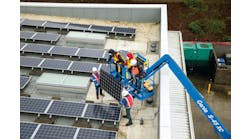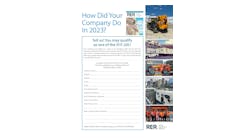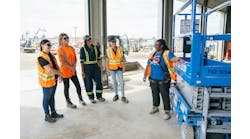In fiscal 2009, the general climate on international construction and agricultural markets had a negative impact on Wacker Neuson Group performance, the company said last week. Revenue dropped by 31.4 percent to €597.0 million (about U.S. $795.5 million) from €870.3 million (U.S. $653.1 million) in the previous year.
While demand for compact equipment remained on a downward spiral, demand for light equipment showed slight signs of revival from the third quarter onwards. The rental business in Central and Eastern Europe reported record sales, confirming that the company was on the right track with its strategy to build this line of business in recent years.
“We proactively and systematically implemented our go-to-market strategies and cost-cutting measures, and succeeded in reducing our break-even point to around €600 million (U.S. $450.3 million),” said Dr. Georg Sick, CEO of Wacker Neuson SE. “We were able to mitigate our sizeable Q1 operating loss with a modest return to the black in the remaining three quarters.”
Profit before interest, tax, depreciation and amortization amounted to €27.2 million (U.S. $20.4 million) from €100.9 million (U.S. $134.5 million) in the same period last year. The first annual loss in company history was reported at €110.1 million (U.S. $146.7 million) from an annual profit in the previous year of €37.4 million (U.S. $49.8 million). This was largely due to two one-off items — HR-related restructuring costs and non-cash write-downs, mainly on goodwill attributable to the Neuson Kramer subgroup, in the amount of €100.3 million (U.S. $133.7 million). Adjusted to discount these one-off items, the net loss for the year only amounted to €2.9 million (U.S. $3.9 million). At the annual general meeting on May 28, the executive and supervisory boards will propose refraining from making a dividend payout for the period under review in view of the negative consolidated earnings.
Over the past year, Wacker Neuson pressed ahead with projects aimed at securing its long-term growth objectives, particularly the global launch of compact equipment through the existing sales and service network. The company also invested in the expansion of sales activities, as well as in regional expansion in Asia and was able to win new market shares as a result. The merger-enabled increase in the depth of the company’s product portfolio was a key success factor here. The planned 20-percent reduction in manpower capacity was achieved, where possible largely through more flexible working hours and short-time work in various countries including Germany. Despite concerted efforts in this area, the company was obliged to make around 630 redundancies (temporary staff included) in 2009, reducing headcount to 3,059 from 3,665 the previous year. In total, HR, property, plant and equipment costs were cut by around €58 million (U.S. $77.3 million). Approximately €35 million (U.S. $46.6 million) of these savings are of an enduring nature.
In 2009 Wacker Neuson improved its asset and financial position significantly, converting a net debt of €59.0 million (U.S. $78.6 million) to a net positive balance of €24.9 million (U.S. $33.2 million). The company reduced inventory levels and drastically cut working capital by €86.0 million (U.S. $114.6 million). Cutting back on investments strengthened the company’s financial position, showing liquidity of €85.0 million (U.S. $113.3 million). Despite the goodwill impairment, the company increased its equity ratio from 77.4 percent to 81.5 percent.
“We are in a good position to seize upcoming market opportunities and are well prepared for an economic upturn,” said Sick. “Demand stabilized towards the end of fiscal 2009 and this trend has continued into the first two months of fiscal 2010. We again see positive signs for order intake for this period relative to the same period last year.”
The company said it currently expects the construction and agricultural markets to stabilize at a low level in the first half of 2010 and to pick up worldwide during the second half of the year. It expects positive impetus from the growing need for replacement investments due to an infrastructure backlog and, in many countries, from various government incentive programs.
“We expect revenue to rise by at least 5 percent in 2010,” said Sick. “We also expect an increase in EBITDA and a return to the profit zone at operating level.”
Starting in 2010, the company plans to launch its Farm Mobility concept, aimed at transferring compact equipment know-how more effectively to other group brands and markets. The company will also continue to launch compact equipment worldwide. In 2010, the group intends to invest around €70.0 million (U.S. $93.3 million) in projects such as the new R&D center in Munich, Germany, and various group-wide maintenance projects.
“Securing our extremely healthy asset and financial position remains a top priority,” added Sick. “We will continue to keep a tight rein on costs, but do not at present envisage further staff rationalization measures.” Acquisitions and partnerships will remain part of the company’s medium-term strategy to strengthen the existing product offering to the benefit of customers or expand the company’s international reach.
Wacker Neuson SE is a global manufacturer of light and compact equipment.





